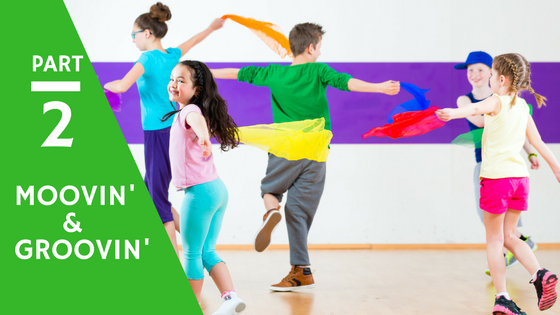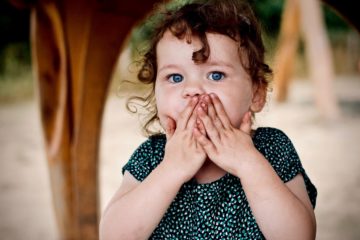Movin’ & Groovin’ Part 2

In Moovin’ and Groovin’ Part 1, we talked about General Movement tips and Fun movement. Now, we will look at purposeful movements and how this benefits our students.
Purposeful Movements
- Excercise. Movement, especially those to develop gross motor skills, often looks like exercise. Â However, when paired with music, it develops the child as a whole. In music class, we call exercise “body engergizers,” it is still exercise. (smile) Â Music Teachers need movement and Physical Education Teachers need music. Â The two go hand in hand. The following quotes are as published in Early Child Connections.Â
Music evokes movement, and children delight in and require movement for their development and growth.
Developmentally appropriate music activities involve the whole child-the child’s desire for language, the body’s urge to move, the brain’s attention to patterns, the ear’s lead in initiating communication, the voice’s response to sounds, as well as the eye-hand coordination associated with playing musical instruments
- Steady Beat Movements. Movement helps to find the steady beat. This is also a precursor to pitch. Â Yes, you read that correctly. Â It really works! Â Developing steady beat will develop coordination and pitch in children. Read the post on Pitch here to learn more. One of the most important points to remember when teaching steady beat is that you need to allow the focus to be on the beat. Â Children, even though they are the same age, can be at different stages of development. Â One child can sing while they are working on steady beat. Other children need to concentrate on one or the other. So, if you focus is steady beat, then don’t correct wrong words, just focus on the steady beat.
Early in my teaching career, I taught a First Grade Choir – ten boys and two girls. Pitch was scarce. I tried every trick I had been taught in my music education classes. Every activity and game we played, I tried to find an angle to teach pitch. Looking for some connection between pitch and some other developmental ability we would learn through music. Then I learned about Helen Kemp and her philosophy of steady beat being the basis for good pitch. So I revised my plan. Still using scale work and ear training, I became much more intentional about a steady beat. Finally improvement in the group as a whole. Steady beat improved, but so did their pitch.
- Choreography Movements. Choreography with children is never going to be perfectly in sync and crisp. Â However, there are a few things that we can do with our kids to clean it up. Make big movements hit on the beat. Or speak the movements in a rhythm that children can easily remember. Â For instance the steps may include placing arms straight up in the air, then out to the sides, then down by their sides. I would say on the beat, “Up, side, down, repeat.” What about arms and pointing different directions or the face that some elbows are straight and some are bent? Â This becomes and issue if you a holding the arms up for a length of time that the audience will have a chance to see the differences. If that is an important move that will be seen, work on it. Â Stand several children up front with arms bent all the different ways that they will do the move, so that the other kids can see how bad it looks. Â Everytime you rehearse that move, just choreography or with the song, make “much” about that move. (in a positive light of course.) Â I know the children in my class or choir have this, when I tell them that we are about to do “_____” song. Then I will ask them, what do they think I will tell them to watch or listen for. Â When they can repeat things like “straight arms, watch you for the cut off, etc.” then I know they have it.
- Time Signature moves. I love to use moves to teach time signatures. When we use arms, I always start with arms straight in the air. From there the arms always go straight down on beat 1. Â Next they could go in any manner of patterns to accomplish the time signature with which you are working. This allows for a very easy connection that when they are following the director, beat 1 is always straight down. When using legs, Beat 1 is going to be down, simply by the nature of a step.
Music is such a fun way to learn. Period. Â Take the extra steps to plan the movements you will use in children, whether it is a Brain Break, or something specific you are teaching. Using movement successfully will not feel chaotic. As always you can email with quesitons. Thanks for reading!
Keep singing, (and moving),
Mrs. Darlene
.



8 Comments
coursework writing service · February 5, 2023 at 4:46 PM
creative writing english coursework https://buycoursework.org/
design and technology gcse coursework · February 5, 2023 at 2:03 PM
custom coursework writing https://coursework-expert.com/
coursework help uk · February 5, 2023 at 12:24 PM
coursework writing service https://courseworkinfotest.com/
custom coursework · February 5, 2023 at 11:59 AM
coursework marking https://courseworkdownloads.com/
coursework support · February 5, 2023 at 9:32 AM
coursework support https://mycourseworkhelp.net/
custom coursework · February 5, 2023 at 7:35 AM
coursework moderation https://courseworkninja.com/
coursework writing services · February 5, 2023 at 5:55 AM
coursework info https://brainycoursework.com/
3matches · January 25, 2023 at 2:31 PM
2vomiting
Comments are closed.